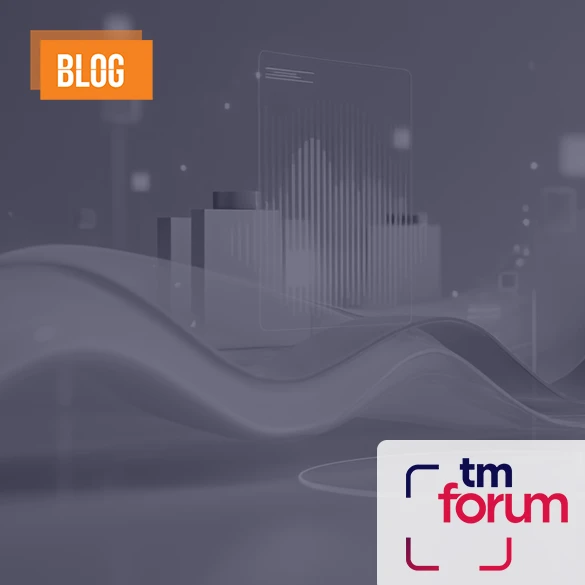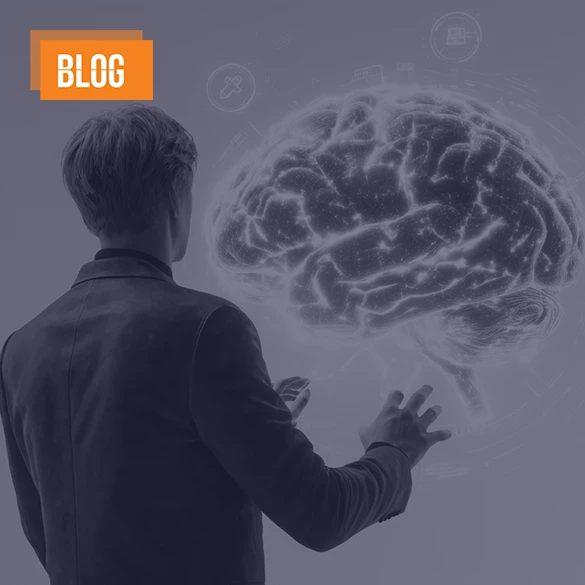Agentic AI and Digital Twins: The Next Frontier for Telco CX and Efficiency

The past two years have seen an explosion in Generative AI. The ubiquitous technology has had a huge impact on customer service, but it also has a major shortcoming – it is predominantly reactive. While GenAI can respond to prompts, it is unable to take an independent action – to ‘take initiative’ by anticipating a customer’s needs, making a decision, and then interacting meaningfully with its systems to pursue a desired outcome.
However, when a technology is hyped for offering ‘intelligence’, then customers will have high expectations. This ramps up the pressure on telcos to deliver seamless customer experiences, requiring more efficient operations and swift service launches – all while keeping costs down.
Agentic AI - A New Paradigm in Automation
Against this backdrop, traditional automation and ‘passive’ AI are no longer sufficient – there is an increased need to break down the silos between systems, channels, and departments, with more autonomy required to bridge the gap between AI-powered insights and actual execution.
To address this, operators are turning to Agentic AI. This represents a paradigm shift from automation to autonomy, empowering intelligent agents to act independently, pursue goals, orchestrate actions, and deliver measurable impact across various domains.
Agentic AI evolves beyond GenAI by enabling autonomous systems that act, adapt, and collaborate, making decisions and taking actions without constant prompts from users. These Large Language Model (LLM)-powered intelligent agents are equipped with Retrieval-Augmented Generation (RAG), verified tool and API execution, and shared long-term memory for continuous learning and coordination.
Unlike traditional models, Agentic AI is context-aware and goal-driven, capable of managing workflows, executing real-time processes, and making informed decisions across business domains. From faster customer resolutions to automated back-office processes, it delivers measurable gains in efficiency, accuracy, and customer satisfaction.
Digital Twins - The Foundation for Intelligent, Hyper-personalized Actions
Agentic AI empowers telcos to redefine how they operate, innovate, and engage, marking a pivotal shift toward proactive, autonomous intelligence. By combining Agentic AI with Digital Twins, operators can shift from reactive customer service systems to proactive interactions and goal-driven operations, helping to improve efficiency, enhance customer experience and drive sustainable revenue growth in a complex market environment.
AI-powered Digital Twins provide businesses with virtual models of customers, products, processes, and operations. These are continuously updated with real-time data, offering insight into behaviour and history that enable simulations to make predictions and test strategies before they are executed.
Digital Twins offer personalised products and service delivery, and provide insights to relevant operational and analytical layers within the BSS ecosystem – for example predicting churn or optimizing offers. Digital twins can help de-risk innovation by providing these insights in a simulation environment – and agentic AI can then use this context to inform decisions and implement them with confidence.
Goal-oriented agents act on objectives such as issue resolution and service provisioning across different systems, integrating CRM, billing, provisioning, care, and marketing platforms. Together, agentic AI and digital twins enable closed-loop processes that self-optimize through reinforcement learning, redefining enterprise agility by moving beyond static, rule-based systems.
CX Innovation and Efficiency Gains
Customer experience is transformed from reactive to proactive, as digital twins personalize the customer journey through tailored recommendations and offers, while agents adapt flows based on customer intent. Issues such as churn and network disruptions are anticipated before they arise, and customer satisfaction is boosted by higher first-contact resolution, fewer handoffs, and lower wait times.
The combination enables efficiency across operations, with digital twins able to simulate forecasts – e.g. for business impact or resources requirements - ahead of execution. Meanwhile the agentic AI autonomously handles tasks such as order & ticket management and customer onboarding. The accelerated processes improve productivity and lead to faster resolutions through intelligent resource allocation.
Getting Started: What Telcos Need to Enable Agentic AI
So, how can telcos make the most of this synergy between Digital Twins and Agentic AI? It starts with creating a meaningful twin – and this involves a unifying data strategy that brings together customer, network, and service data. Operators must also shift towards open architecture so that AI agents are able to operate across systems via APIs; this will require strong governance and safety mechanisms to ensure that agents are accurately monitored.
By managing this change to establish trust in the AI agents via training and collaboration, organizations will be able to shift from reactive task handling to proactive, intelligent execution. By automating complexity, Agentic AI frees up human capacity for high-value strategic tasks, accelerates time-to-value, and positions the enterprise for scalable, AI-native growth.
This is the core strength of Agentic AI – it is not merely about automation, but intelligent delegation. Telcos that adopt agentic models together with digital twins can enhance customer experience to boost loyalty while improving their agility and cost effectiveness, shaping new standards in proactive, intelligent service delivery.
Unlock Autonomous, Insight-Driven Engagement with Etiya’s AI Innovation
Etiya empowers telecom operators with a cutting-edge AI-native platform that transforms traditional BSS into a predictive, context-aware, and autonomous decision engine. By combining the Digital Twin of Customer (DToC) with the Agentic AI orchestration layer, operators can personalize every customer interaction across sales, care, and marketing.
At the core is the Digital Twin of Customer providing explainable, real-time insights in a single view, embedded in the BSS toolbox (e.g., churn risk, CLV, usage forecasts) through AI-powered visualizations and tooltips. This allows frontline teams to understand the "why" behind every prediction and take confident, informed action.
These insights feed into Etiya’s Agentic AI — a cloud-native system that orchestrates a swarm of autonomous, LLM-powered agents. Paired with digital twins, they operate with access to a live knowledge fabric via Retrieval-Augmented Generation (RAG). Agents can safely trigger real actions (e.g., adjust quota or open a ticket) via typed function calling with built-in guardrails and policy checks.
With Etiya, business users can create new AI agents in minutes with no coding or developer involvement – just natural language. The RAG technology allows these agents to create answers and take real actions based on the specified reference documents. With every interaction, agents learn, adapt and scale alongside a growing organization.
AI-powered self-service channels with Twin-driven insights result in 35% less customer calls, and a reduced Average Handling Time (AHT) from 7 to 2 minutes. On the commercial side, Digital Twin-driven Next- Best-Action (NBA) and Next-Best-Offer (NBO) recommendations can deliver up to 5% revenue uplift, leveraging real-time behavioural data, purchase history and contextual signals to recommend products or services at the most opportune moment.
With multi-agent orchestration, telcos can automate complex, multi-step tasks and workflows across marketing, care, catalog, and network operations using a drag-and-drop no-code studio. This delivers end-to-end automation with full-stack BSS integration — accelerating resolutions, improving upsell accuracy, and reducing operational costs by up to 26%.
By leveraging Agentic AI and Digital Twin technologies, Etiya equips telcos with the intelligence, transparency, and agility required to thrive in an AI-driven, customer-centric future.
Author: Staff Writer, Developing Telecoms
This article was first published on Developing Telecoms








